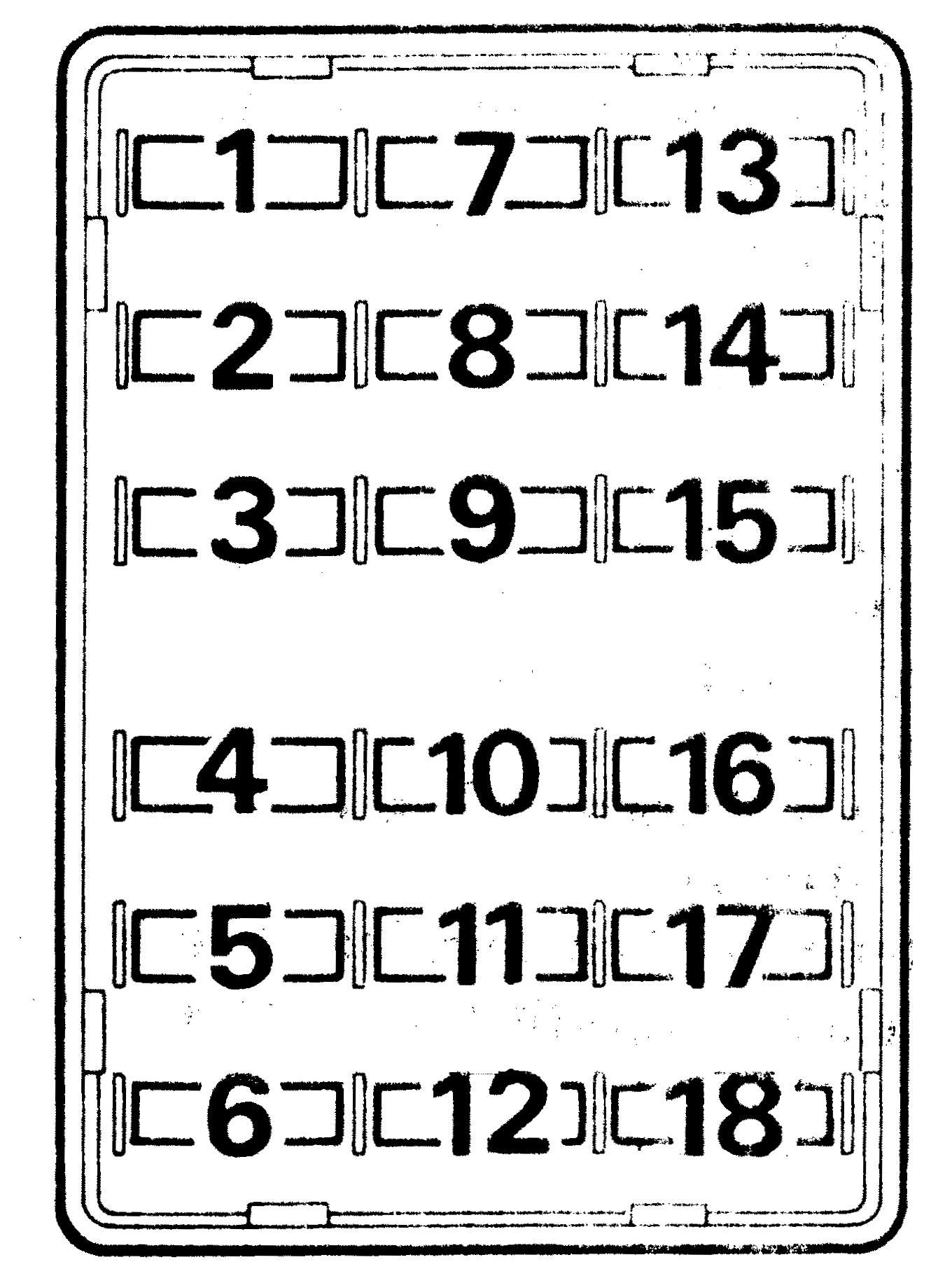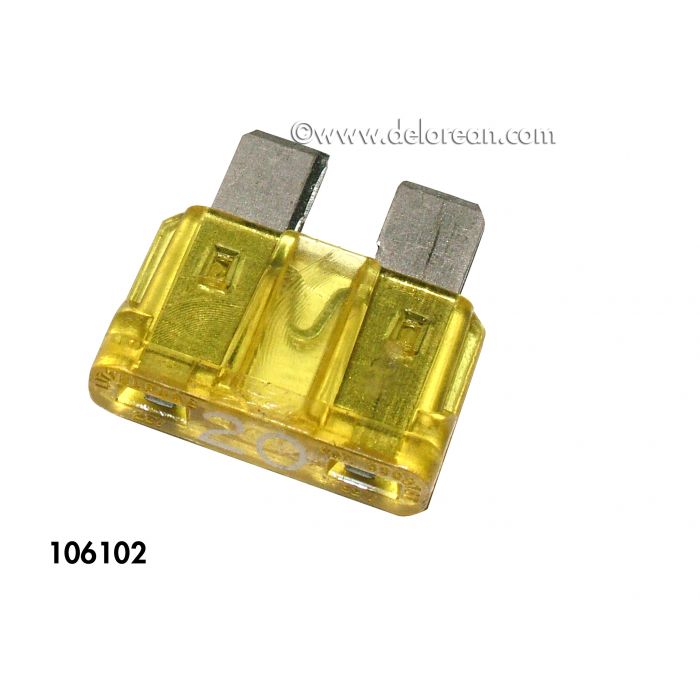One of the most alarming sights for a DeLorean owner is a fuse box with one or more of the fuse positions melted and crispy-looking, with the fuse itself bubbly and deformed, as shown below. That's an extreme case, but note that the 20A fuse 3 spaces below the melted one has started to melt and is slightly out of alignment.
Often the circuit still sort of works. The fix for this condition is either to jump past the affected positions with external fused links or to change out the entire fuse box (Part # 106913). DMC's new fuse blocks have improved receptacle terminals and block material that melts at a higher temperature, so there should be no repeat of the problem. They also come with illustrated instructions for installation, and a self-adhesive "quick reference" sheet ideal to affix in this area.
Fuses are numbered 1-18 starting at the top left (as shown below) and counting down and over. The melted fuse in the photo above, therefore, is fuse #7.
 Fuse Box Numbering
Fuse Box Numbering Typical Fuse
Typical Fuse
Either repair will eliminate the cause of the problem at that position - oxidized aluminum contacts of the fuses. When the blades of the fuse acquire a coat of alumina over time, the resistance of the connection rises, increasing the heat generated, like a heating element. The temperature eventually goes high enough to melt the fuse and burn away the fuse block around the fuse. There is never a problem of too much current, just too much heat. (Too much current would just blow the fuse).
An annual fuse box service - easily done at home - is highly recommended in either an old or new block to prevent build-up of the oxide. Simply remove each fuse in turn, file or sand both blades to bare metal and re-install the fuse. Another option is to remove each fuse, match it to a new one of the same color, install the new one in the empty position, and deposit the old one in a trash bin.
We typically recommend removing the fuse box cover and leaving it loose in the relay compartment to help prevent the heat buildup, as well.
BATTERY NOTES
A leading contributor to this problem is sulfuric acid fumes from the battery. Lead acid batteries always emit slight amounts of acid fumes while charging. There is a small road draft vent tube behind the battery that extracts the fumes while the car is moving. If you use a battery charger while the car is stored, however, the fumes stay in the compartment and contribute to corrosion of the electrical compartment connections. If you must use a battery charger with the battery in place, be sure to use a "smart" charger (often called a Battery Maintainer) that cycles on and off as the battery is charged, and will shut down if the battery fails. A simple trickle charger will often overcharge the battery, especially when the battery gets old and cells fail. This leads to even more acid fumes and can actually boil the battery so that acid comes out "wet" and ruins the carpet.
We highly recommend removing the battery for long term storage, or, at a minimum, leave the battery compartment cover off while connected to an external charger.
The other common cause of an overcharged battery is a failed
alternator, especially in earlier cars equipped with the "Ducellier" alternator. If you still have one of these, replace it.
Revised 1/13/2022 ET (formatting and links)